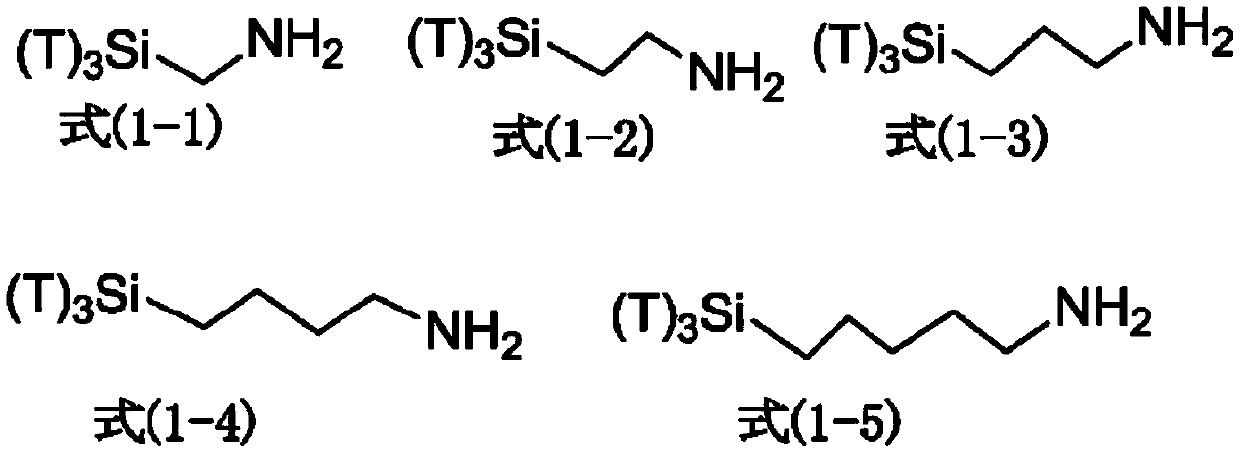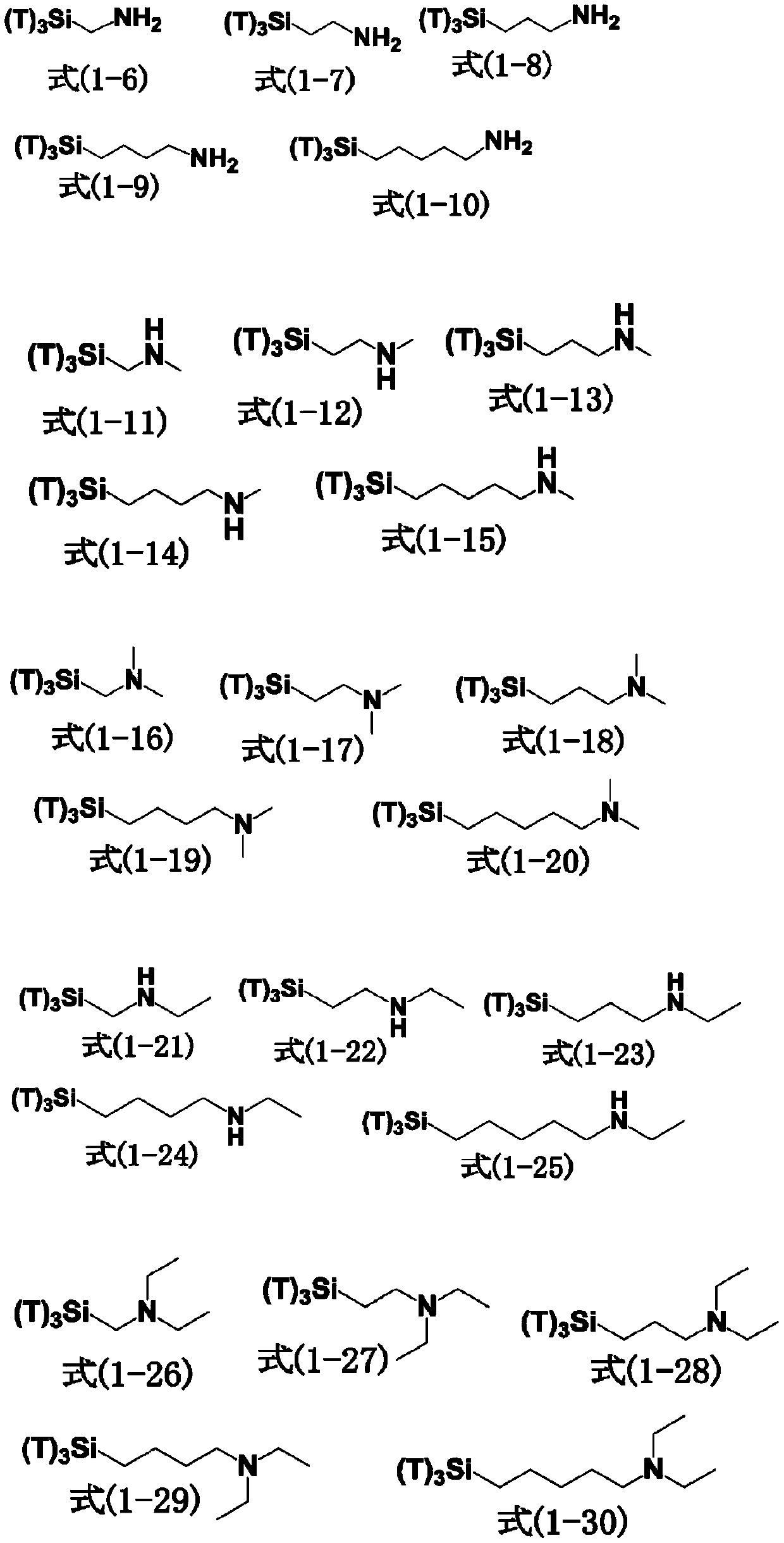Semiconductor device production method employing silicon-containing resist underlayer film-forming composition including organic group having ammonium group
A technology of resist lower layer and manufacturing method, which is applied in semiconductor/solid-state device manufacturing, photoplate-making process of patterned surface, photosensitive material used in optomechanical equipment, etc., and can solve the problems such as the reduction of etching speed
- Summary
- Abstract
- Description
- Claims
- Application Information
AI Technical Summary
Problems solved by technology
Method used
Image
Examples
Synthetic example 1
[0213] Add 22.3g of tetraethoxysilane, 6.5g of methyltriethoxysilane, 3.2g of triethoxysilylpropyl diallyl isocyanurate, and 48.5g of acetone into a 300ml flask, A mixed solution of 19.2 g of a 0.2 M nitric acid aqueous solution and 0.32 g of dimethylaminopropyltrimethoxysilane was added dropwise while stirring the mixed solution with a magnetic stirrer. After the addition, the flask was transferred to an oil bath adjusted to 85° C., and refluxed for 240 minutes. Then, 64 g of propylene glycol monomethyl ether was added, and acetone, methanol, ethanol, and water were distilled off under reduced pressure, and concentrated to obtain a hydrolysis-condensation product (polymer) aqueous solution. Furthermore, propylene glycol monomethyl ether was added, and it adjusted so that the solvent ratio may become 100% of propylene glycol monomethyl ether, and the solid residue in 140 degreeC may become 13 weight%. The obtained polymer corresponded to formula (A-1), and the weight average ...
Synthetic example 2
[0215] Add 23.1g of tetraethoxysilane, 6.8g of methyltriethoxysilane, 1.9g of glycidoxypropyltrimethoxysilane, and 48.1g of acetone into a 300ml flask, and stir the mixed solution with electromagnetic A mixed solution of 19.8 g of a 0.2 M nitric acid aqueous solution and 0.32 g of dimethylaminopropyltrimethoxysilane was added dropwise while stirring with an apparatus. After the addition, the flask was transferred to an oil bath adjusted to 85° C., and refluxed for 240 minutes. Then, 64 g of propylene glycol monomethyl ether was added, and acetone, methanol, ethanol, and water were distilled off under reduced pressure, and concentrated to obtain a hydrolysis-condensation product (polymer) aqueous solution. Furthermore, propylene glycol monomethyl ether was added, and it adjusted so that the solvent ratio may become 100% of propylene glycol monomethyl ether, and the solid residue in 140 degreeC may become 13 weight%. The obtained polymer corresponds to the formula (A-2), and th...
Synthetic example 3
[0217] Add 22.6g of tetraethoxysilane, 6.6g of methyltriethoxysilane, 2.7g of phenylsulfonylpropyltriethoxysilane, and 48.4g of acetone into a 300ml flask, and stir the mixed solution by electromagnetic stirring A mixed solution of 19.4 g of a 0.2 M nitric acid aqueous solution and 0.32 g of dimethylaminopropyltrimethoxysilane was added dropwise while stirring with an apparatus. After the addition, the flask was transferred to an oil bath adjusted to 85° C., and refluxed for 240 minutes. Then, 64 g of propylene glycol monomethyl ether was added, and acetone, methanol, ethanol, and water were distilled off under reduced pressure, and concentrated to obtain a hydrolysis-condensation product (polymer) aqueous solution. Furthermore, propylene glycol monomethyl ether was added, and it adjusted so that the solvent ratio may become 100% of propylene glycol monomethyl ether, and the solid residue in 140 degreeC may become 13 weight%. The obtained polymer corresponded to formula (A-3)...
PUM
| Property | Measurement | Unit |
|---|---|---|
| thickness | aaaaa | aaaaa |
| polydispersity index | aaaaa | aaaaa |
Abstract
Description
Claims
Application Information
 Login to View More
Login to View More - R&D
- Intellectual Property
- Life Sciences
- Materials
- Tech Scout
- Unparalleled Data Quality
- Higher Quality Content
- 60% Fewer Hallucinations
Browse by: Latest US Patents, China's latest patents, Technical Efficacy Thesaurus, Application Domain, Technology Topic, Popular Technical Reports.
© 2025 PatSnap. All rights reserved.Legal|Privacy policy|Modern Slavery Act Transparency Statement|Sitemap|About US| Contact US: help@patsnap.com



